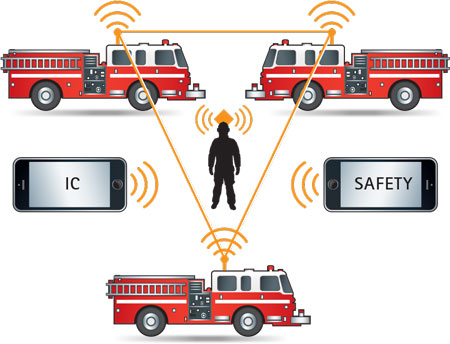
By ANDREW JARRETT
We’ve seen huge advancements in technology throughout our lives, especially in the past few years. It seems that everywhere you look, a new gadget is coming out to solve a problem you didn’t know you had or to make everyday life a bit easier. Although our fire engines cannot quite drive themselves yet (I’m looking at you, Tesla), and every good pump tester will tell you that analog pressure gauges are better than digital, technology and the fire service inevitably intersect.
Technology has already found a niche in the fire scene through reporting inside the apparatus, ambulance, and command vehicle. With mobile data terminals in every major municipal department and report-writing software a standard for the past decade, we’re getting used to some computer assistance in our on-shift lives. However, there is still a huge void for technology to fill: providing quick tactical intelligence and smarter accountability on the fire scene. At the moment, accountability – if done at all – is usually performed on paper or on a tag board, and information about the conditions within the hazard area can be relayed only by radio. Improved technology is on its way with ResponderX and its TaskForceTracker command and accountability system. TaskForceTracker brings information into the hands of command, safety, and rapid intervention teams (RITs) faster than ever before. By attaching a small, always on, wearable device to firefighters, we are able to provide more information than ever before to those who need it the most.
Accountability on the fire scene is a significant factor and stressor for many safety officers. It is astounding how many large municipal fire departments have not adopted a formal accountability system for their first responders. Having worked in the fire service using the tried-and-true passport system, I found it difficult to comprehend. After speaking to officers in many of these departments, the major issues were culture and time. The shifting culture of the fire service has always been difficult, which is where the system excels. By providing a device that is always affixed to the helmet, with no on/off switch or additional steps needed to activate the system on scene, TaskForceTracker provides accurate accountability and tracking of personnel without departments fighting major cultural or procedural changes. By mounting low-cost communications hubs to apparatus, it also avoids the time-consuming step of setting up extra equipment on scene.
 |
| (1) Photo courtesy of ResponderX. |
TaskForceTracker automatically begins to configure itself when the apparatus leaves the station and instantly forms the network that runs the system when multiple units arrive on scene. Command or Safety turns on a tablet and selects the incident scene to begin receiving all available information on accountability of individuals and units on scene as well as the location of individuals within a structure and around the scene.
Although TaskForceTracker is not a replacement for the passport system, it is a powerful tool to add to the toolbox for use at any incident. TaskForceTracker wearable devices offer a convenient quick-release mount to allow personnel to quickly switch the device from structural firefighting helmets to rescue and wildland helmets, as the incident type dictates. By avoiding a self-contained breathing apparatus-mounted tracking solution, it allows for tracking and accountability of personnel independent of structural firefighting and for other incidents that are becoming more prevalent such as tactical incidents, wildland firefighting, and technical rescue.
In addition to safety-oriented tracking, TaskForceTracker also allows a workspace for incident commanders to track the tactical and assignment aspects of an incident. With the ability to configure department-specific checklists and workspaces, command will be able to see location information of personnel as well as track the rotation of crews in and out of a structure and into rehab assignments. This ensures that fresh personnel are rotated into physically exhausting assignments and department policy on rehab can be followed.
In addition, if an emergency arises, you can immediately alert command and RIT to a problem and assign the appropriate resources or select the appropriate entrance to launch rescue attempts based on the location of the firefighter experiencing an emergency. Using this new technology, ResponderX hopes to make emergency response smarter and safer, buying precious minutes for a firefighter in a Mayday situation or preventing a Mayday situation altogether.
ANDREW JARRETT is a driver/engineer for the South Brazos County (TX) Fire Department, an adjunct instructor for the Texas A&M Engineering Extension Service, and a member of the Brazos Valley Type III Incident Management Team. His company, ResponderX, Inc., was founded in 2015 to produce wearable technology solutions for first responders.
Fire Engineering Archives

